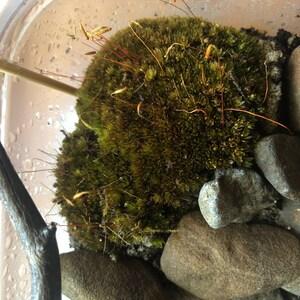Unveiling Andreaea: A Resilient and Enigmatic Moss
Affiliate Disclaimer: As an affiliate, we may earn a small commission when you make a purchase from any of the links on this page at no additional cost to you!

iap_300x300.3986304617_macirupx.jpg from: https://www.etsy.com/listing/989144102/red-moss-andreaea-alpina-alpine-rock
Introduction
Nestled within the vast tapestry of nature lies a remarkable moss species that has captured the hearts of enthusiasts worldwide – the Andreaea alpina Hedw., or simply known as Andreaea. This unassuming yet fascinating member of the Andreaeaceae family has carved out a unique niche in the world of Bryophyta (mosses), captivating botanists and nature lovers alike with its resilience and adaptability.
Background
Before delving into the intricacies of this extraordinary moss, it’s essential to understand its taxonomic classification. Andreaea alpina Hedw. belongs to the phylum Bryophyta, class Andreaeopsida, and family Andreaeaceae. This diminutive plant has been a subject of fascination for centuries, with its distinctive features and ecological significance drawing the attention of researchers and naturalists from around the globe.
Main Content
Morphology and Identification
Andreaea alpina Hedw. is a small, acrocarpous moss that forms dense, cushion-like tufts or mats. Its leaves are typically lanceolate (lance-shaped) and keeled (with a prominent midrib), giving the plant a distinctive appearance. The capsules, or spore-bearing structures, are immersed within the tufts, making them less conspicuous to the untrained eye.
One of the most remarkable features of this moss is its ability to tolerate extreme conditions. It thrives in environments with high levels of acidity, such as those found in alpine and subalpine regions, where it often grows on rocks or soil rich in minerals like iron and aluminum.
Global Distribution and Habitat
Andreaea alpina Hedw. is widely distributed across the globe, with populations found in various regions, including Europe, North America, Asia, and even Antarctica. Its ability to withstand harsh conditions has allowed it to colonize a diverse range of habitats, from alpine tundra and rocky outcrops to acidic bogs and exposed cliffs.
This moss is particularly abundant in areas with cool, moist climates and high levels of precipitation, such as the mountains of Scandinavia, the Scottish Highlands, and the Rocky Mountains of North America.
Ecological Roles and Adaptations
Despite its diminutive size, Andreaea alpina Hedw. plays a crucial role in the ecosystems it inhabits. As a pioneer species, it is often one of the first plants to colonize bare rock surfaces, paving the way for other organisms to establish themselves. Its ability to retain moisture and create microhabitats makes it an essential component of many alpine and subalpine communities.
Moreover, this moss exhibits remarkable adaptations that enable it to thrive in harsh environments. Its dense cushion-like growth form helps to conserve water and protect the plant from desiccation, while its tolerance to acidity allows it to flourish in areas where few other plants can survive.
Case Studies/Examples
One notable example of the ecological significance of Andreaea alpina Hedw. can be found in the Scottish Highlands. Here, this moss plays a vital role in the formation and maintenance of peat bogs, which are essential habitats for a wide range of plant and animal species, including the iconic Scottish Crossbill.
In the Rocky Mountains of North America, Andreaea alpina Hedw. is a key component of the alpine tundra ecosystem, providing shelter and moisture for a diverse array of invertebrates and serving as a food source for various herbivores.
Technical Table
| Characteristic | Description |
|---|---|
| Phylum | Bryophyta |
| Class | Andreaeopsida |
| Family | Andreaeaceae |
| Genus | Andreaea |
| Species | alpina Hedw. |
| Growth Form | Dense cushions or mats |
| Leaf Shape | Lanceolate (lance-shaped), keeled |
| Capsule Position | Immersed within the tufts |
| Habitat | Alpine and subalpine regions, acidic environments |
| Distribution | Widespread across Europe, North America, Asia, and Antarctica |
| Ecological Role | Pioneer species, moisture retention, microhabitat creation |
| Adaptations | Tolerance to acidity, dense growth form, water conservation |
Conclusion
Andreaea alpina Hedw., a true marvel of the moss world, stands as a testament to the resilience and adaptability of nature. Its ability to thrive in some of the harshest environments on Earth, while playing a vital role in shaping entire ecosystems, is nothing short of remarkable. As we continue to explore and appreciate the wonders of the natural world, this unassuming moss serves as a reminder of the intricate web of life that surrounds us, inspiring us to delve deeper into the mysteries that lie beneath our feet.
Thought-provoking question: In a world where biodiversity is under constant threat, how can we ensure the preservation of species like Andreaea alpina Hedw., whose ecological significance often goes unnoticed?
